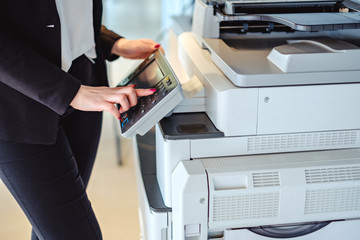Printers have evolved from simple devices for printing documents to multifunctional machines that cater to various needs in both home and office environments. Whether you’re printing important documents, photos, or projects, printers have become an essential tool for daily tasks. With advancements in technology, printers now offer features such as wireless connectivity, high-quality photo printing, and all-in-one capabilities. They are no longer just for businesses but have become integral in homes for personal, educational, and creative purposes, making them indispensable in our digital world.
Types of Printers: Finding the Right One for You
There are several types of printers available, each designed for specific tasks. Inkjet printers are popular for their versatility, providing high-quality color printing suitable for photos and documents. Laser printers, on the other hand, are known for their efficiency and fast printing speeds, making them ideal for businesses that need to print large volumes of text-based documents. All-in-one printers combine printing, scanning, copying, and sometimes faxing, offering convenience in a single device. There are also specialty printers, like 3D printers and label printers, for specific applications.
Printer Technology: Inkjet vs. Laser
The two primary technologies used in printers are inkjet and laser. Inkjet printers use liquid ink sprayed through microscopic nozzles onto paper, allowing for high-quality color prints, especially for images and graphics. They are more affordable upfront but can be more expensive in the long run due to ink costs. Laser printers use powdered toner and a laser beam to form text and images, making them faster and more cost-efficient for printing large volumes of black-and-white documents. They are ideal for businesses or home offices that require high-volume, low-cost printing.
Wireless and Network Printers: Convenience and Connectivity
Wireless printers have become increasingly popular, offering the convenience of printing from multiple devices without the need for physical connections. Wi-Fi-enabled printers allow users to print directly from smartphones, tablets, or laptops, making them perfect for homes or small offices. Many printers now support cloud printing, enabling users to send documents to the printer from anywhere via the Internet. Network printers, commonly used in offices, can be connected to a local network, allowing multiple users to access the same printer, which is especially helpful in a shared workspace.
Printer Maintenance: Keeping Your Printer in Top Condition
Proper maintenance is crucial to ensuring your printer functions smoothly and lasts longer. Regularly cleaning the printhead, ink cartridges, and rollers will help prevent clogging and paper jams. For inkjet printers, using high-quality ink and paper will ensure optimal print quality and reduce the chances of smudging. It’s also essential to check for firmware and software updates regularly, as manufacturers often release updates to improve functionality. Additionally, replacing old ink cartridges and toner as needed will help maintain consistent print quality and avoid interruptions in your workflow.
Conclusion
As technology continues to advance, the future of printers looks promising. In the coming years, we can expect even more sophisticated features, such as improved wireless connectivity, faster printing speeds, and enhanced energy efficiency. 3D printing is also becoming more accessible, allowing for the creation of three-dimensional objects from digital files. Additionally, advancements in eco-friendly printing solutions are on the rise, with manufacturers focusing on reducing waste, using recyclable materials, and developing printers that use less energy. The printer industry will continue to evolve, offering more efficient and environmentally friendly solutions.
